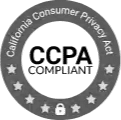How to weave sales enablement and sales leadership into a more perfect union

Table of Contents
Over the past 18 months, service selling has transformed to become more digital, more global, and more data-driven, heightening the need for better systems and processes. One result of today’s digitally transformed sales world is that sales enablement needs to be aligned more tightly than ever with sales leadership.
The impetus to improve the relationship comes from both sides. Sales enablement teams are fed up with fighting for leadership buy-in for every training initiative, and sales leaders are anxious to see value from the programs they approve. Is there a way to remove friction between sales leadership and sales enablement, and bring the two teams together in harmony?
Fortunately, the answer is yes. Here are 5 tips for sales enablement to make themselves and their systems indispensable to sales executives, smoothing the way to training program rollout without conflict.
1. Inform yourself about sales leadership’s goals
Increasing alignment with sales leaders means sharing their concerns and understanding their goals. That’s why Pete Ostrow, VP/ Research Director at the analyst firm Forrester noted in the recent SES Experience conference that high-performing companies are increasingly moving sales enablement personnel to report to sales leadership rather than marketing.
As part of this shift in alignment, sales enablement personnel must make sure they have a seat in the room when sales leaders lay out their goals and targets for the upcoming year and for each quarter.
This is difficult if you don’t have enough sales enablement employees; Ostrow noted that high performing companies have an average of one sales enablement person for every 36 sellers, in contrast with lower-performing organizations where the ratio is one per 49. (note that these figures change a bit for extremely large organizations). With more sales enablement people, successful sales teams are able to dedicate more attention to sales leaders’ needs and better align their sales coaching efforts.
2. Understand the customer journey
The shift from rep-led to self-led buyer journeys among B2B buyers has been well documented. In his talk at the 2021 Sales Enablement Soiree, Brent Adamson, Distinguished Vice President, Advisory, at Gartner, shared data showing that an average of 43% of all B2B buyers, and 54% of millennial buyers, prefer to buy complex solutions without the involvement of a sales employee, aka a “rep-free experience.”
It’s a clear trend that’s dangerous to ignore, as Adamson emphasized, because although customers prefer to manage on their own, without a rep, they still struggle to distinguish between the nuances of competing solutions and are thus more likely to end up regretting their purchase decision.
This sharpens the need for sales enablement teams to fully understand the customer journey, so they know exactly what their sellers need to know to meet the needs of the customer at every stage.
For example, today, more leads make inbound calls to a sales rep after spending time perusing their website. Sellers need specific sales enablement training for these situations, so they can support a knowledgeable lead who is nonetheless uncertain about the differentiating factors of your solution.
3. Speak the language of sales
Sales enablement has been in the marketing stable for a long time, but now it’s time to shift to speak the language of sales, not marketing. That means simplifying situations and talking in terms of scenarios, not features or functions.
For example, sales enablement personnel need to talk about what to do at certain stages of the pipeline, how to move forward when a deal gets stuck, and objective handling. Sales leaders want to see results, which means delineating the problem in sales speak and then outlining a results-based training program.
4. Keep in sync with sales leadership metrics
It’s not enough just to be informed about sales leaders’ yearly and quarterly goals; you need to stay up to date with progress towards them, and align with their monthly, quarterly and yearly sales cycles. Most of all, that requires simply being present. Stop by the CRO’s office, hear their updates and which goals they are missing, and ask about where deals are getting stuck.
But this alignment has to go both ways. Sales leaders are chronically overwhelmed by hours of pitch recordings, which they need to listen to in order to learn how to make sellers stronger and more effective. Sales enablement should step up to the plate by gathering information from sales reps in the field, and condensing it into actionable insights for sales leaders.
Sales coaching tools like Second Nature can help by delivering leading indicators that reveal what’s going to happen in the field before it takes place, saving sales leaders valuable time and preventing them from learning the hard way.
5. Review your progress
It’s not enough to open the year – or the quarter – by sharing sales leaders’ goals. You need to also end the year by reviewing them together. Sales enablement needs to once again take a seat in the room when sales executives summarize success and failure in hitting their targets, and come prepared to share their own insights.
You should be able to show how sales enablement contributed to every positive and negative KPI that’s raised at this session. And then, of course, listen in on the next year’s sales goals and start over again.
For sales enablement and sales leaders, this could be the start of a beautiful friendship
Aligning sales enablement more tightly with sales leadership creates a win-win situation. Sales enablement teams will find it easier to raise support for their next initiative, while CROs will have more insights to guide their sales strategies. By joining sales leaders to follow their goals, progress, and critical review, learning to talk the language of sales, and improving their understanding of the customer journey, sales enablement can create a better sales environment and succeed in their roles.
About Russell Zack
Russ is Head of Revenue at Second Nature. His career has run the gamut as a Founder and President to multiple startups, scaling corporate and European markets for Kaltura (NASQAQ: KLTR) as a General Manager, as an SVP in MarTech at HelloWorld (acquired by Merkle) and as a Cisco Entrepreneur in Residence in Emerging Tech.
We’re Hiring
We have positions available in our Tel-Aviv and New York offices and remote/hybrid.

 7 MIN. READING
7 MIN. READING


